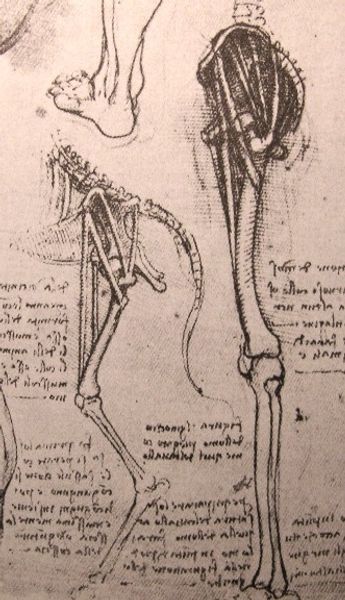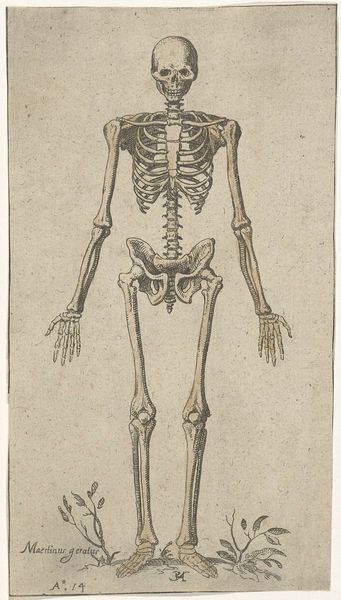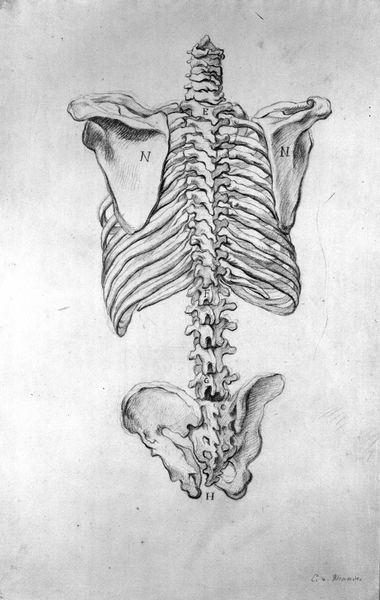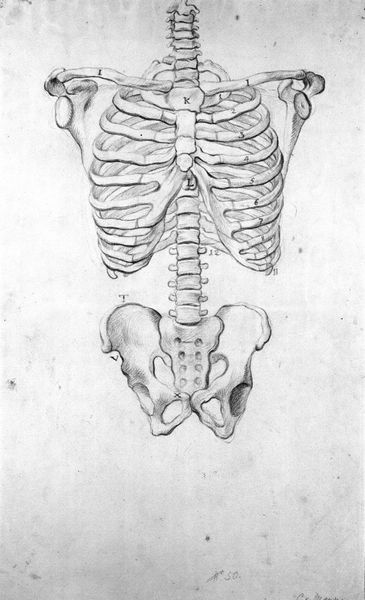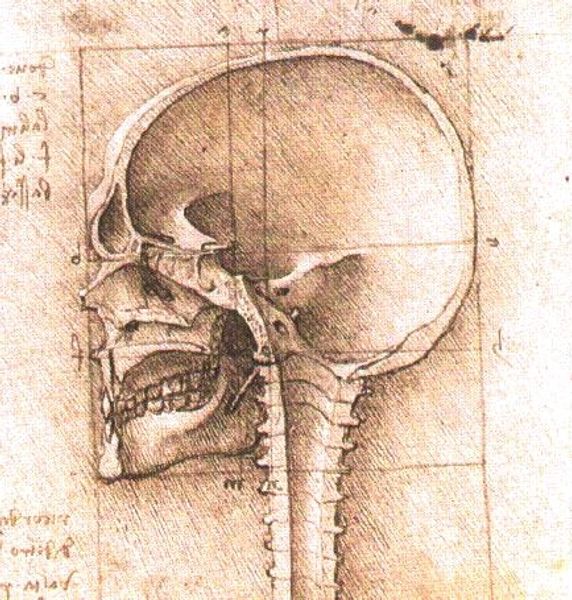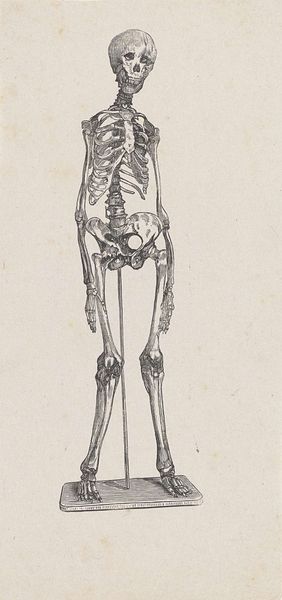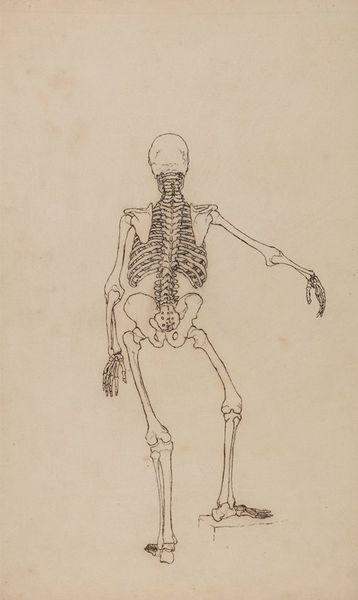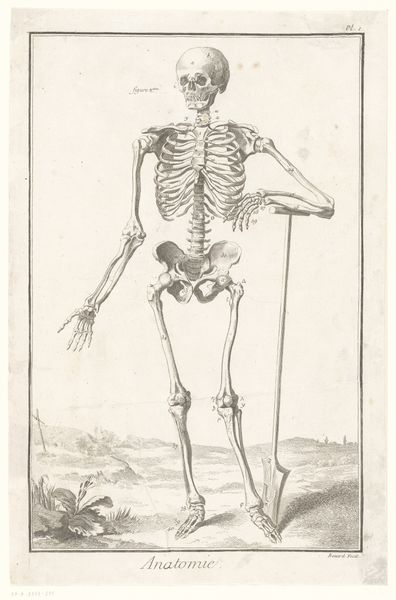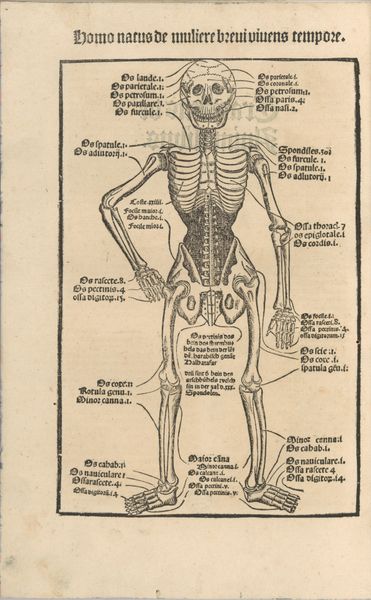
drawing, paper, ink, pen
#
drawing
#
pen sketch
#
figuration
#
paper
#
11_renaissance
#
ink
#
pen-ink sketch
#
human
#
pen work
#
pen
#
history-painting
#
academic-art
#
italian-renaissance
Copyright: Public domain
Curator: Here we have Leonardo da Vinci's "Drawing of the Torso and the Arms," created around 1500, using pen and ink on paper. Editor: It's fascinating! The precision is incredible, almost like an instruction manual. I'm struck by how Da Vinci renders the skeletal structure – so scientific, yet there’s still an artistry in the linework. What is your perspective on this? Curator: I think you hit on a key point. Consider the material conditions of its creation. Da Vinci’s access to cadavers was limited, even restricted. These drawings, while seemingly clinical, emerge from a context of illicit knowledge and immense labor. The "artistry," as you say, lies in the intense process of observation, dissection, and translation onto paper with the materials at hand: pen and ink. Editor: Illicit knowledge? Curator: Yes, dissecting human bodies was often seen as taboo. The Church heavily influenced society. Therefore, each line in the sketch represents a form of rebellion, of scientific and artistic exploration pushing against the constraints of his time. We are not simply viewing a drawing but an act of transgression materialized through ink and paper. What impact do you think the availability of different materials, like better lighting, dissection tools or paper types, would have had? Editor: That makes you consider that the artwork is influenced by the fact the artist used basic tools! Better quality and different papers may have changed his whole design! This really enhances how I see Da Vinci as more of a craftsperson as well as a master. I hadn't previously reflected so intensely on his choices of resources and production. Curator: Exactly. Considering how da Vinci was creating against the restrictions of available tools and time adds greatly to what the work embodies and represents.
Comments
No comments
Be the first to comment and join the conversation on the ultimate creative platform.
